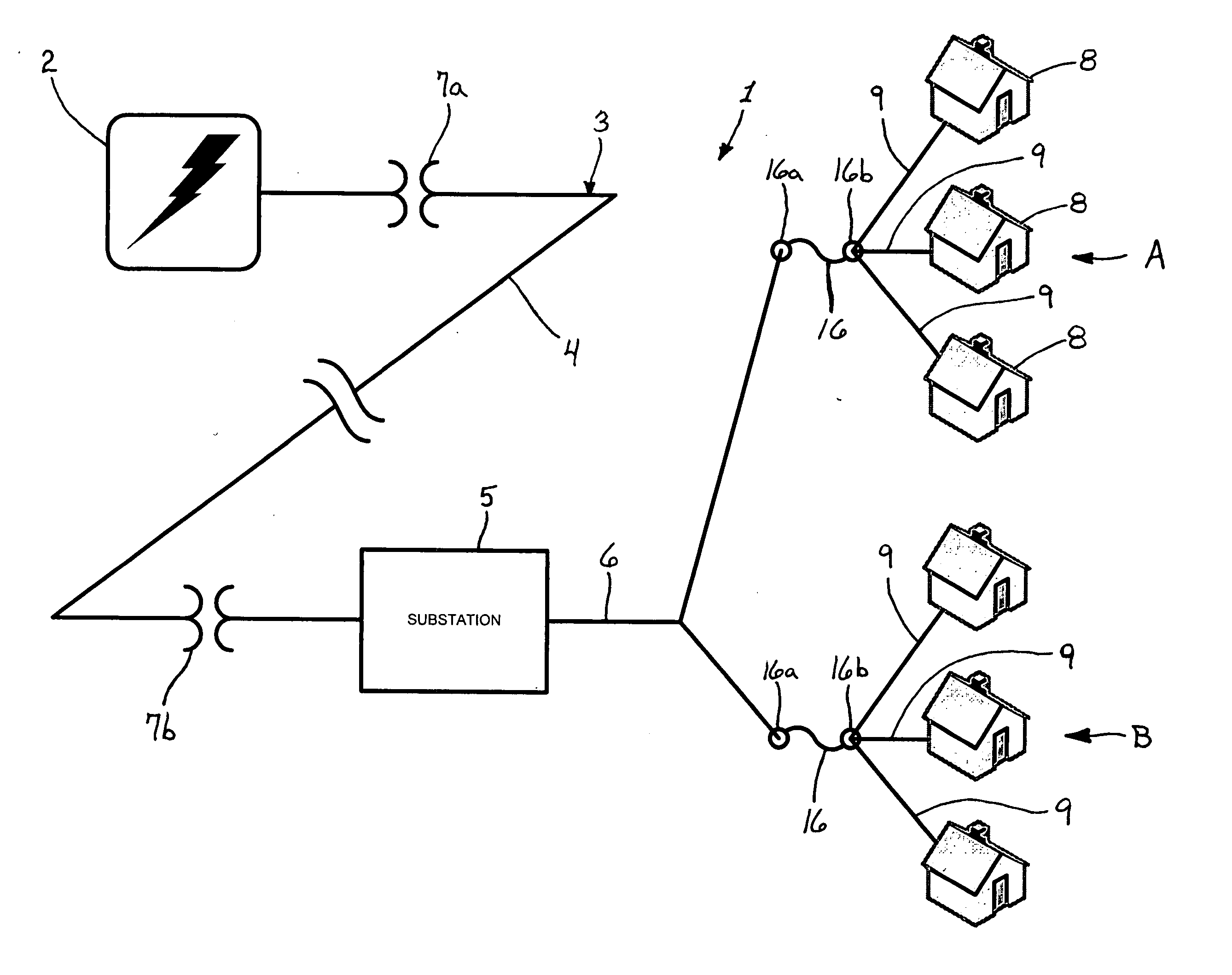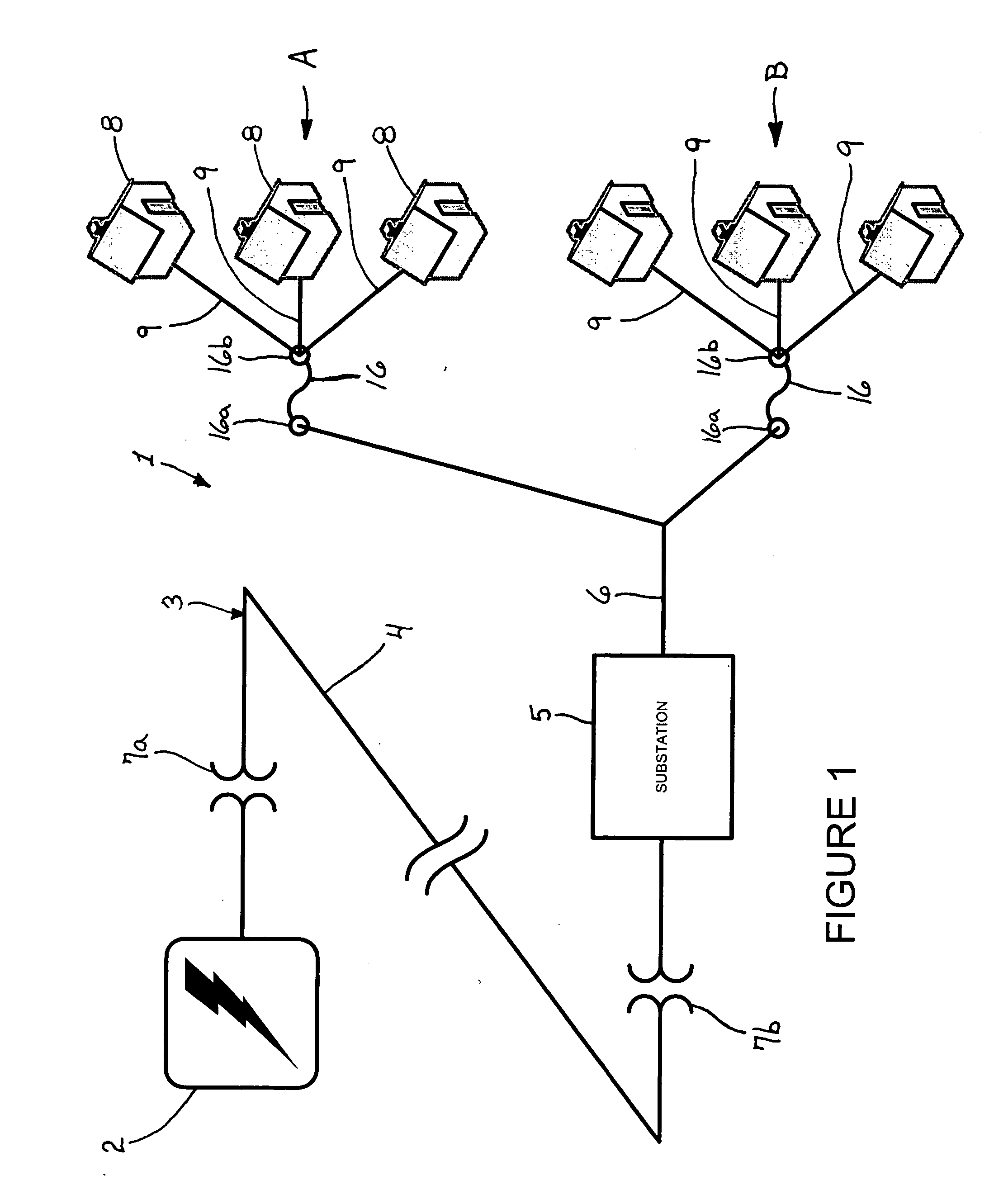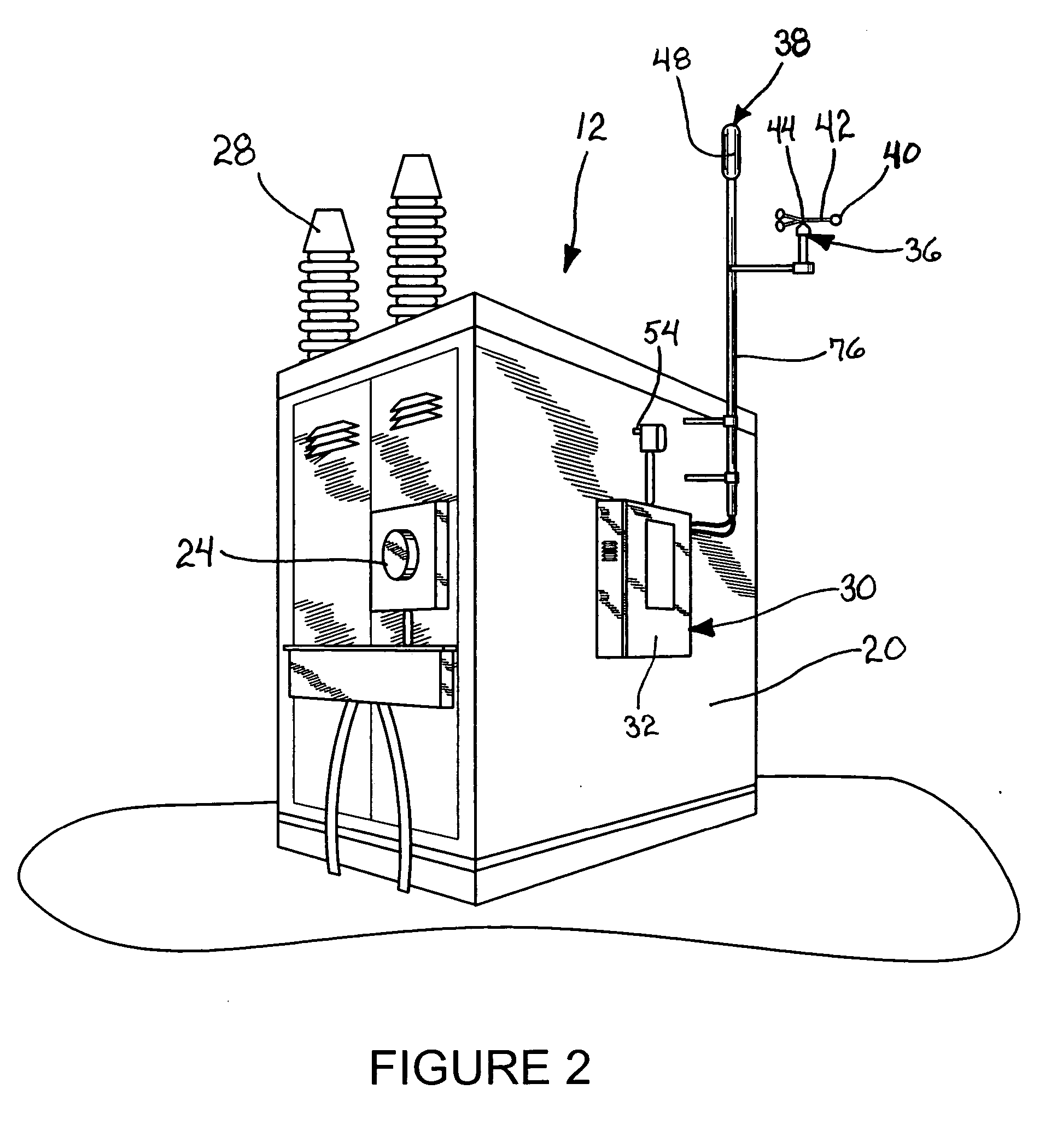Adaptive relaying controlled by autonomous event detection
a relaying and event detection technology, applied in non-electric variable control, process and machine control, instruments, etc., can solve the problems of permanent interruption of electricity service to customers fed by the distribution line and located downstream of the fuse that is blown, interruption of electricity service to customers fed by the distribution line and remain interrupted
- Summary
- Abstract
- Description
- Claims
- Application Information
AI Technical Summary
Problems solved by technology
Method used
Image
Examples
Embodiment Construction
[0023] Certain terminology is used herein for convenience only and is not to be taken as a limitation on the present invention. Relative language used herein is best understood with reference to the drawings, in which like numerals are used to identify like or similar items. Further, in the drawings, certain features may be shown in somewhat schematic form.
[0024]FIG. 1 schematically depicts a typical arrangement of an electric-energy distribution system 1. A generation facility 2 generates electric energy to be distributed to end users with a turbine, nuclear reactor, hydroelectric generator, or any other system for electric energy generation. As the generation facility 2 is the source of the electric energy, it is considered to be the furthermost “upstream” component of the distribution system 1. Based on the position that electric energy is conducted from the generation facility 2 to end users via a power grid 3, features such as a substation 5, transformers 7a, 7b, etc. . . . en...
PUM
 Login to View More
Login to View More Abstract
Description
Claims
Application Information
 Login to View More
Login to View More - R&D
- Intellectual Property
- Life Sciences
- Materials
- Tech Scout
- Unparalleled Data Quality
- Higher Quality Content
- 60% Fewer Hallucinations
Browse by: Latest US Patents, China's latest patents, Technical Efficacy Thesaurus, Application Domain, Technology Topic, Popular Technical Reports.
© 2025 PatSnap. All rights reserved.Legal|Privacy policy|Modern Slavery Act Transparency Statement|Sitemap|About US| Contact US: help@patsnap.com



